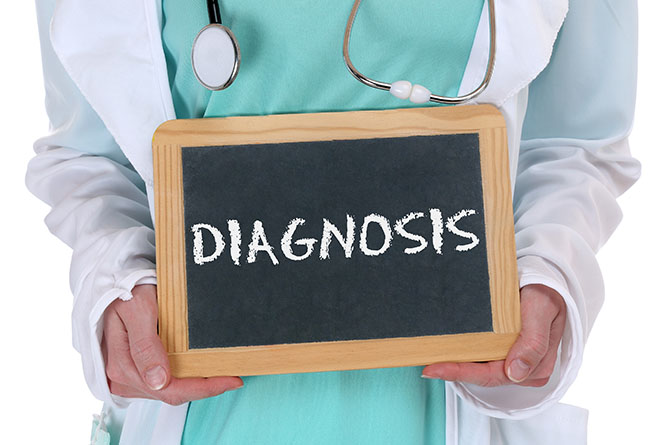200 years ago, a British surgeon named James Parkinson described for the first time the symptoms of a disease that was later named after him. Since then treatment and understanding of this disorder have improved thanks to the doctors and researchers’ work. But the diagnosis is still a complex process and always requires the opinion of an experienced neurologist. Why is it so difficult to pinpoint the disease?
Several illnesses are similar to Parkinson’s disease (which is sometimes confusingly called ‘idiopathic Parkinson syndrome’, ‘typical Parkinson’s disease’ or ‘sporadic Parkinson’s disease‘) and can be easily mistaken for it. That is for example the case with atypical Parkinson syndromes such as Corticobasal Degeneration, Progressive Supranuclear Palsy, Dementia with Lewy bodies and Multiple System Atrophy. There are also parkinsonian syndromes whose symptoms can occur more or less in the same way as those of Parkinson’s disease. However, these illnesses, like Vascular Parkinsonism, encephalitis lethargica or Drug-induced Parkinsonism, have a completely different origin and should hence not be mistaken.
It is therefore very important that the doctor identifies all symptoms in a very detailed manner and is able to exclude all the other diseases. There are numerous symptoms of Parkinson’s disease. Traditionally slower movements (bradykinesia or akinesia), muscular stiffness (rigor), impaired balance and tremors are the main indicators. Other symptoms can also reinforce the diagnostic such as loss of sense of smell (which can occur several years before the first motor symptoms) and/or sensory disorders. Patients can have vegetative symptoms as well: abnormal changes in arterial tension and bladder dysfunction, excessive sweating and sexual problems along with mood disorders such as depression. Memory difficulties (dementia) can also appear in the later stages of the disease.
The neurologist uses three methods to establish a diagnosis: he asks the patient detailed questions about his medical history, he does a neurological exam and asks for additional exams if necessary. During the interview the neurologist enquires whether early symptoms, such as loss of sense of smell, constipation, sleep disorders, depression, dejection or fatigue, exist. He also checks if the patient has been in contact with toxic substances like pesticides, solvents or drugs and if other family members have been diagnosed with Parkinson’s disease. Thanks to those questions, the doctor can identify possible environmental and genetic factors linked with the disease. The genetic element mainly concerns young patients and for those a genetic analysis can be done if need be. Since the discovery of the first gene associated with Parkinson’s disease in 1998, researchers have identified more than 20 other genes whose mutations can be responsible for the disease.
The goal of the neurological exam is to detect the reduced arm swing, stooped posture, muscular stiffness and resting tremors that characterize the disease (but are not necessarily there). Writing tests are often performed as well because the handwriting of patients is generally illegible with letters getting smaller and smaller at the end of the sentence.
To exclude other diseases, it is advised to do additional exams. A CT scan or an MRI of the head should be performed to confirm the diagnosis of each patient. Indeed, medical imaging won’t show any abnormality for patients with Parkinson’s disease but it will detect brain tumours or inflammations that can be responsible for Parkinson-like symptoms. If in doubt, other more substantial exams can facilitate the diagnosis. Nuclear medicine imaging techniques such as DaT scan or PET scan with Fluorodopa allow the doctor to see the dopamine-producing neurons which are less abundant in the brain of Parkinson’s patients. With a cardiac scintigraphy or a MIBG SPECT, it is also possible to see the nerve cells inside the heart and to differentiate more easily Parkinson’s disease from Multiple System Atrophy. A Levodopa treatment can be used to facilitate the diagnosis as well: this drug is often quite effective for Parkinson’s disease but not for atypical Parkinson syndromes.
Given these complex interactions, an experienced doctor needs to make the clinical diagnosis. The patients should be observed over an extended period as well to enable a reliable diagnosis. Symptoms indicative of an atypical Parkinson syndrome for example may appear after a while and consequently the initial diagnosis may have to be revised. For now, an accurate diagnosis with the help of a genetic test is only useful for 10% of the patients (especially young ones and people with familial risk). Nowadays definitive proof of Parkinson’s disease can only be obtained through a autopsy after death which can reveal protein aggregation in parts of the brain affected by the disease under a microscope.
In order to improve diagnosis in the future, the NCER-PD research program aims to discover molecular markers and develop new methods for diagnostic testing: One could think for example of a blood or urine test measuring the concentration of one or several molecules for which some levels are specific to parkinsonian patients. It is therefore crucial that many patients as well as people without Parkinson’s disease that serve as controls participate in the Luxembourg Parkinson’s Study and give blood, saliva and urine samples. These samples will then be analysed in the lab and used to compare healthy volunteers and patients. The participants’ support is vital to reach this important goal of this study: facilitate diagnosis.
Article based on the presentation of Dr Pierre Kolber at the World Parkinson’s Day in Leudelange on 29 April 2016.





